Your cart is currently empty!
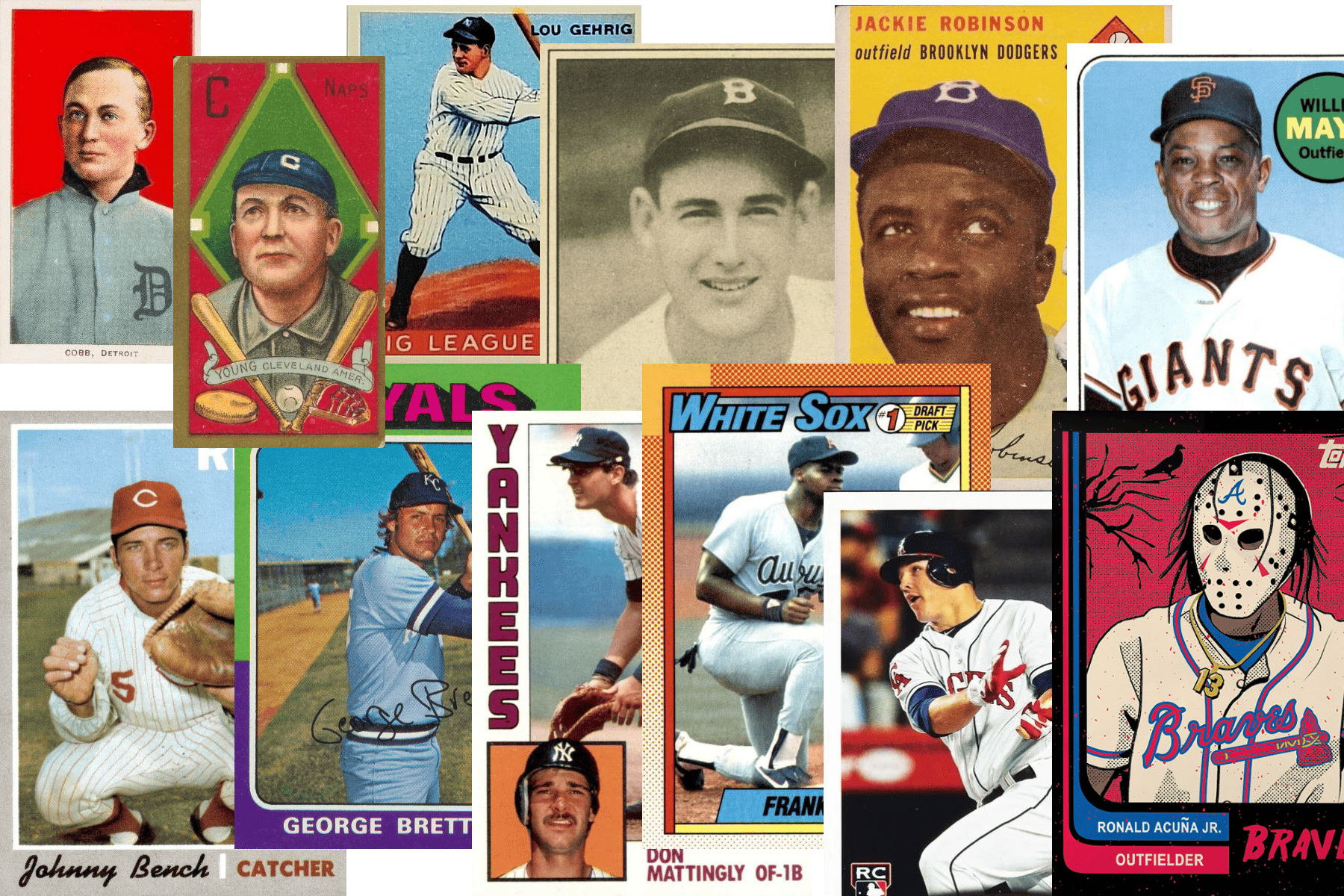
Baseball cards are more than just pieces of cardboard; they are time capsules, capturing the spirit and history of America’s pastime. From their humble origins in the early days of baseball to the high-tech marvels of the modern era, these collectible cards have a fascinating history. Each decade reflects the changing landscape of the sport and the evolving tastes of collectors. Baseball card history is history – let’s get started.
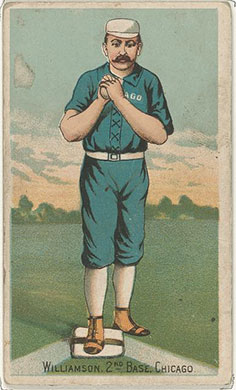
Mid-19th Century: Nascent Times
The earliest baseball cards were not meant for collecting; they were used as promotional tools. The first recorded baseball card is believed to be a trade card featuring the Brooklyn Atlantics in the 1860s.
Tobacco companies, such as Allen & Ginter and Goodwin & Company, included baseball cards in their products as a way to attract customers. So-called “tobacco card”s were often issued with cigarettes. They featured illustrations, photographs, or lithographs of baseball players.
1900s: The Birth of Baseball Cards
The birth of baseball cards as we know them today can be traced back to the early 1900s. The T206 series, produced between 1909 and 1911, stands as a symbol of this era. These tobacco cards featured colorful lithographic images of players from the day.
Notable among them was the Honus Wagner card. It’s of the most coveted and valuable cards in the hobby, owing its scarcity. The story goes that Wagner objected to having his image associated with tobacco products, so cards were short-printed. These cards introduced the concept of trading cards, shifting from being mere advertising pieces to collectible items.
1910s-1920s: The Golden Age of Baseball Cards
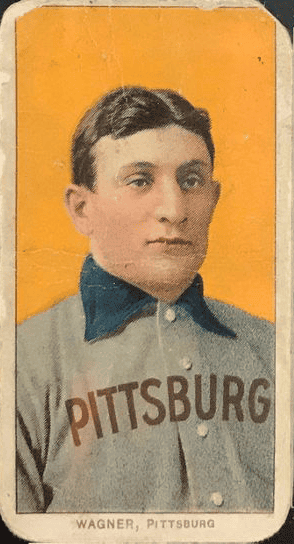
The early 20th century is known as the “Golden Age” of baseball cards. This period marked a boom in baseball card production. Companies like Cracker Jack, Goudey, and Zeenut introduced iconic sets. The 1914 Cracker Jack set was known for its vibrant, real-photo cards featuring players. Collectors cherished these cards, and they continue to be sought after today. The 1921 Zeenut set was regional in nature. It focused on Pacific Coast League players, but it had its own unique charm.
1930s-1940s: The War and Post-War Era
In the 1930s, bubble gum companies like Goudey Gum began producing baseball cards. The 1933 Goudey set, featuring the likes of Babe Ruth and Lou Gehrig, is a landmark in baseball card history. Many experts consider it one of the “Big Three” sets to collect, along with the T-206 and 1952 Topps. The bright designs on Goudey cards ushered in a new wave of technology. These cards eschewed the sepia-tones of the early baseball card years. Instead, they turned to a printing process that could mass-produce baseball cards in color.
The Great Depression and World War II took their toll on card production during the 1930s and early 1940s. However, after the war, baseball cards experienced a resurgence. The 1948 Leaf set is considered the first post-war set, and is widely known for its short-printed Satchel Paige rookie card.
1950s-1960s: The Card-Collecting Boom
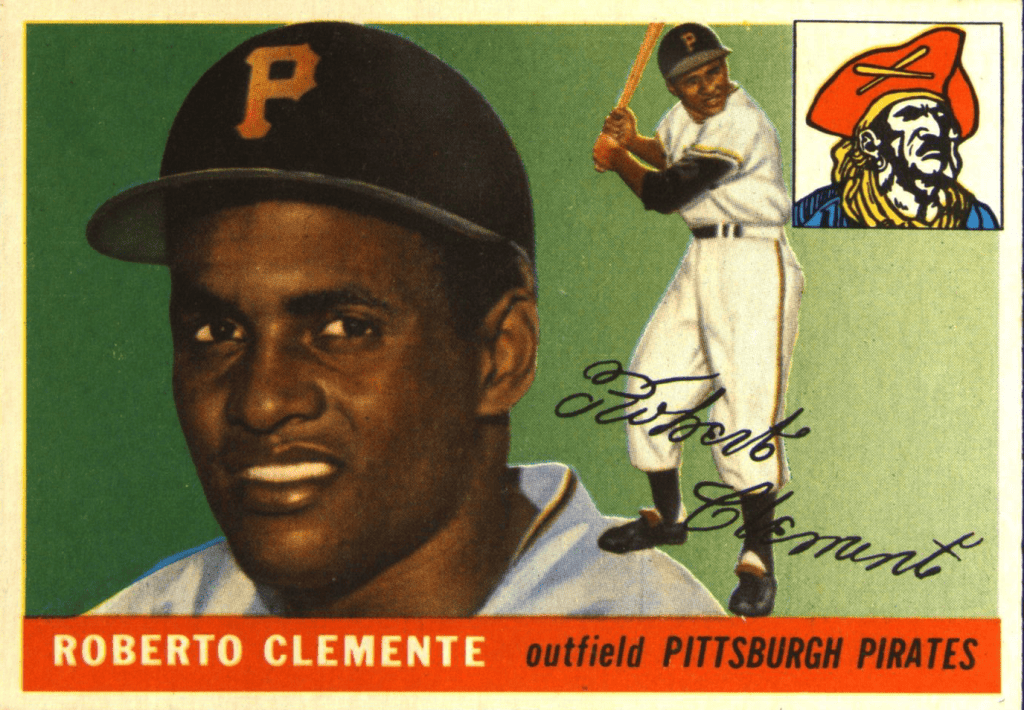
The post-World War II era saw the emergence of several key sets that remain highly collectible today. Topps entered the scene in 1951 with its Red Back and Blue Back sets, and in 1952, Topps released the iconic Mickey Mantle card (one of which sold in 2022 for $12.6 million). The 1954 Topps Hank Aaron rookie card and the 1955 Roberto Clemente cards are also notable from this era.
The 1960s saw the advent of specialty sets like the 1961 Fleer Baseball Greats, which focused on retired players. It was during these decades that card collecting became a mainstream hobby, with millions of kids collecting cards and trading with friends. Active players like Reggie Jackson, Johnny Bench, Tom Seaver and Nolan Ryan graced the fronts of these 1960s cards, many of which were produced in a horizontal format.
1970s-1980s: The Modern Era Begins
The 1970s and 1980s brought about a shift in card design and production. Topps remained a significant player, but other companies like Fleer and Donruss entered the market. The 1979 Topps Ozzie Smith rookie card and the 1984 Donruss Don Mattingly rookie card are notable from this era. The 1980s also saw the advent of “insert cards” – special edition cards featuring holograms and other unique elements.
1990s-Present: The Modern Card Revolution
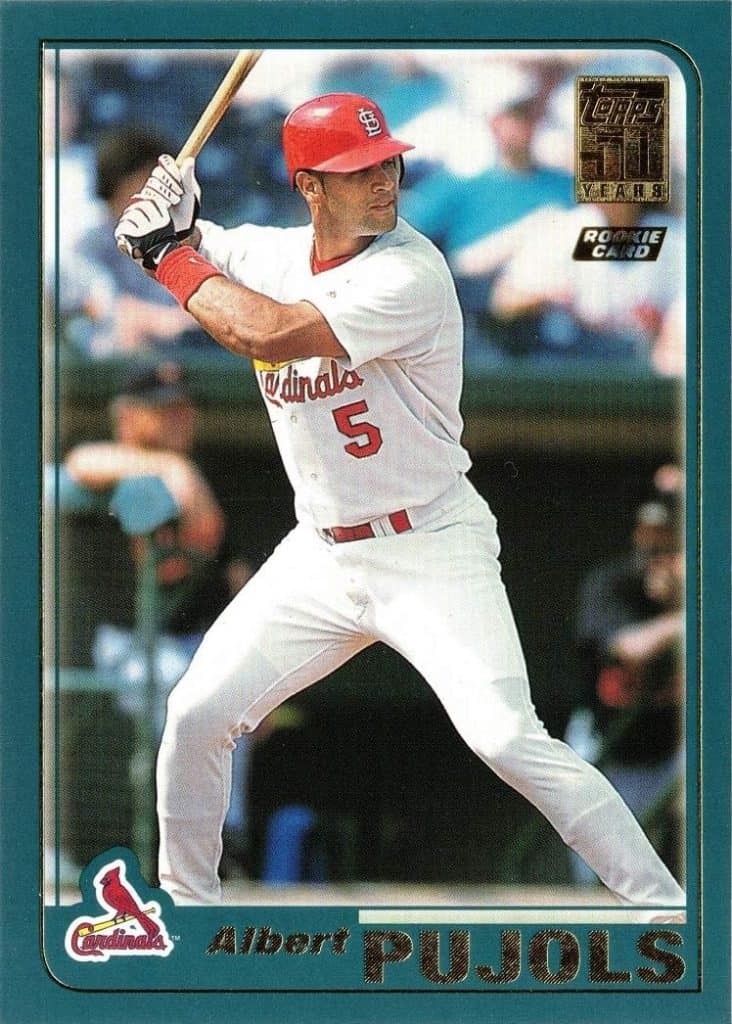
The 1990s marked the era of the modern card revolution. At the turn of the decade, Upper Deck introduced premium printing techniques with its 1989 Ken Griffey Jr. rookie card, which had a significant impact on the hobby. The 1990s were also known for increasing the production of cards, a concept that led to some cards of the era being deemed “junk wax.”
In the 2000s, collectors pushed back on this concept as serial numbered cards and parallels sprang up.
The card collecting hobby also saw the emergence of autographed and memorabilia cards, with Upper Deck producing the first-ever autograph insert in their 1990 packs. (It was Reggie Jackson, with a handwritten serial number up to 2,500)
In the 21st century, digital cards have gained prominence, with companies like Topps launching digital card apps that capitalize on blockchain technology. The value of digital cards remains a hotly-debated item, but they fit into a portion of society that increasingly trusts digital assets like cryptocurrency and NFTs.
Overall Historical Impact
Baseball card history is deeply intertwined with the history of baseball itself. These cards have not only documented the evolution of the sport but also played a vital role in preserving its history. They have provided a bridge between generations, passing down stories and legends of the game.
In conclusion, the history of baseball cards is a remarkable journey through time. Each decade has brought its own unique charm to the hobby, reflecting the changes in baseball, card design, and the tastes of collectors. The enduring appeal of these cards lies in their ability to capture the essence of America’s pastime, making them cherished artifacts for collectors and fans alike.
Tags:
Share:
